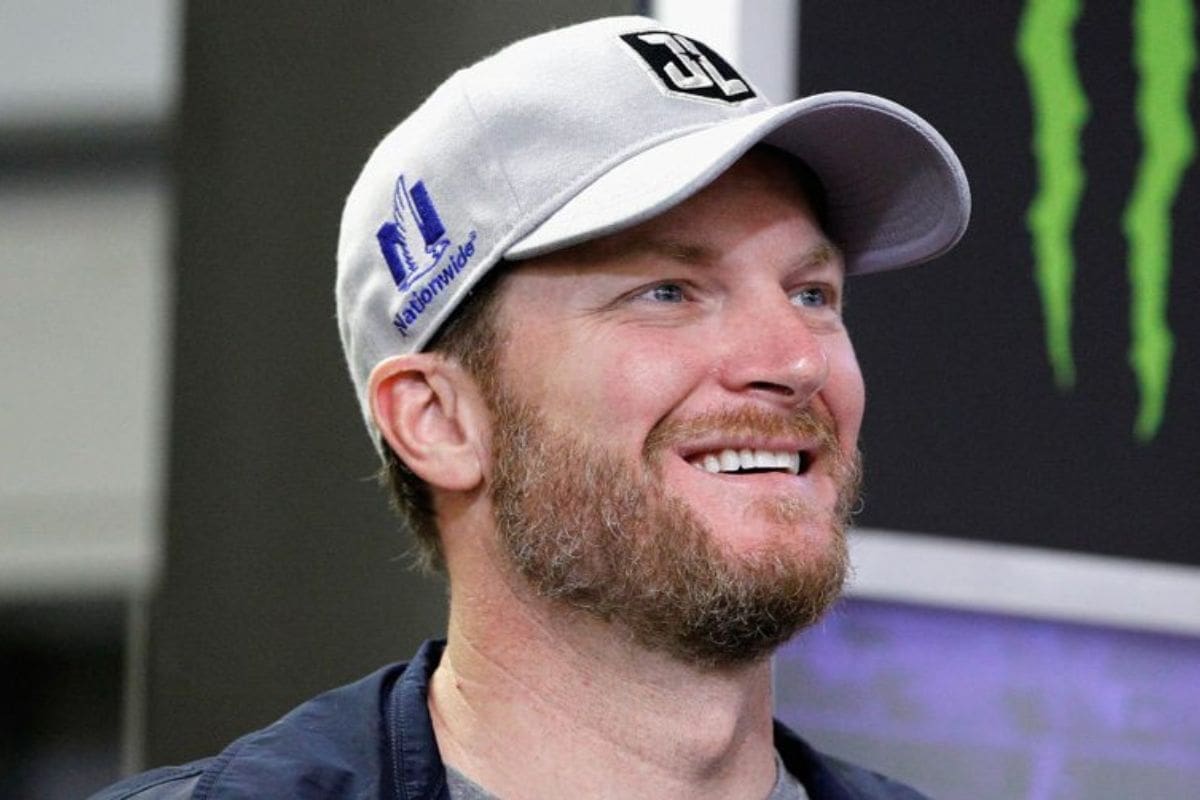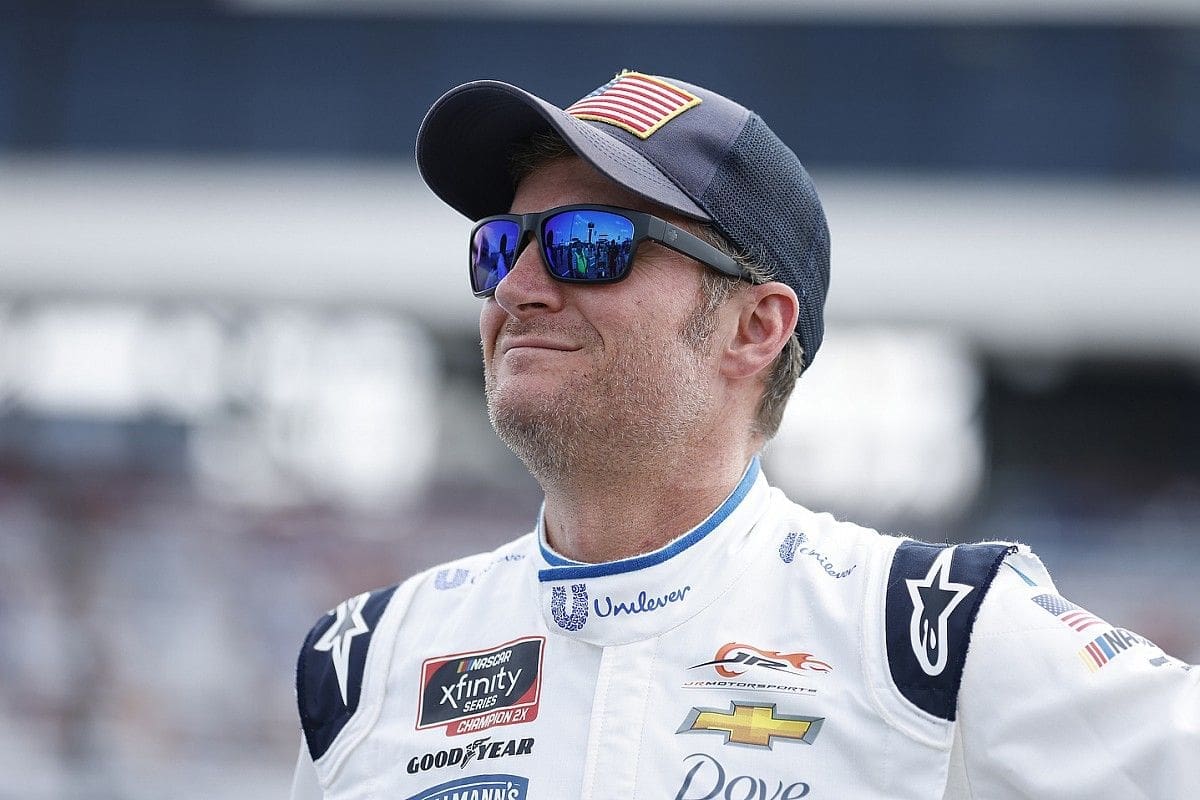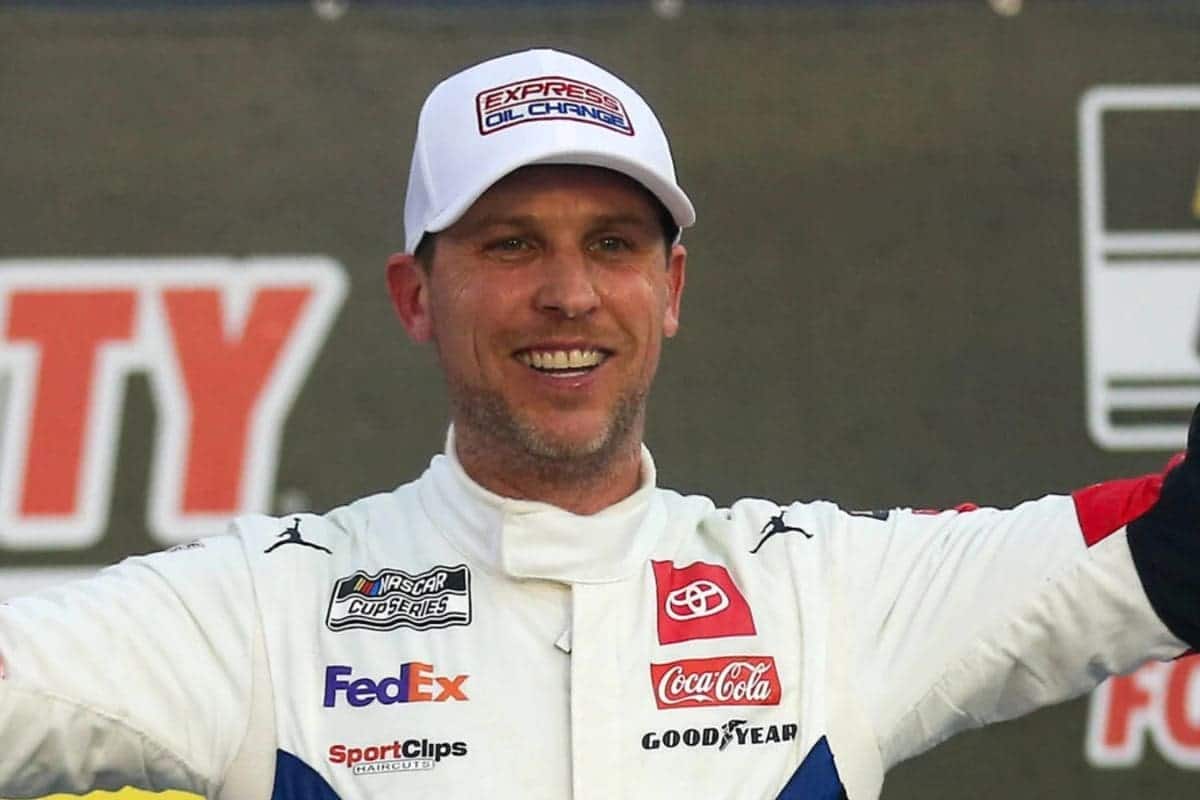Dale Jr. Discusses His Frustration With Hamlin: Dale Earnhardt Jr.’s recent comments on Denny Hamlin’s dominance on Next-Gen tracks have sparked discussions within the NASCAR community, shedding light on the changing dynamics of track surfaces and their impact on race outcomes. Earnhardt’s preference for traditional asphalt tracks contrasts sharply with the performance metrics observed on concrete surfaces, where Hamlin has excelled. This contrast raises questions about the adaptability required for drivers in this new era and the implications for competitive fairness. As Earnhardt critiques the current trend, one must consider whether the shift to solid surfaces is enhancing or hindering the sport’s diversity in winners.
Key Highlights
- Dale Jr. expresses frustration over concrete tracks amplifying Hamlin’s competitive edge.
- He criticizes the impact of concrete surfaces on vehicle stability and driver comfort.
- Dale Jr. highlights the role of Joe Gibbs Racing’s meticulous setups in Hamlin’s success.
- He points out the increased tire wear and mechanical issues on concrete tracks.
- Dale Jr. believes tire manufacturers haven’t adequately addressed concrete track challenges.
Dale Jr.’s Preference for Asphalt
In discussing his track preferences on the Dale Jr. Download podcast, Dale Earnhardt Jr. highlighted his partiality for asphalt surfaces over concrete, attributing this preference to the unique racing dynamics and characteristics of tracks like Dover and Bristol. Earnhardt Jr. cited the steep banking of these tracks and their relatively short length as key factors contributing to his affection.
The steep banking of tracks such as Dover Motor Speedway provides complexity to the racing experience. This characteristic compels drivers to maintain higher cornering speeds, which in turn necessitates a delicate balance between aggression and control. The asphalt surface further improves this dynamic by offering a more consistent grip level compared to concrete, allowing for more predictable handling and tire wear.
Bristol Motor Speedway, in particular, holds a special place in Earnhardt Jr.’s heart, especially when it featured an asphalt surface. The short-track nature of Bristol amplifies the intensity of the competition, fostering close-quarters racing and frequent overtakes. Asphalt, with its smoother texture, facilitates better traction and a more responsive driving feel, which is crucial in the tight confines of a short track.
Issues with Asphalt Surfaces
Shifting to the challenges associated with asphalt surfaces, one significant issue highlighted by Dale Earnhardt Jr. is the frequent deterioration and breaking up of the track, which can disrupt races and necessitate costly repairs. This issue, particularly noticeable at Bristol, has historically led to interruptions during events, causing delays and posing safety risks to drivers. The degradation of asphalt can result in uneven surfaces, creating unpredictable conditions that compromise vehicle performance and driver control.
Asphalt’s susceptibility to wear and tear is worsened by different environmental factors and the intense demands of high-speed racing. Temperature fluctuations, heavy rainfall, and the sheer force exerted by the cars contribute to the asphalt’s gradual breakdown. Over time, these factors can cause cracks, potholes, and loose gravel, which not only diminish the quality of the race but also require regular maintenance to ensure the track remains in a usable condition.
Dale Earnhardt Jr. has expressed his concerns regarding the long-term viability of asphalt tracks, especially given these frequent issues. His observations are not isolated as NASCAR officials at other venues, such as Dover, have faced similar challenges with asphalt’s limitations. The transition to concrete at these tracks was largely a response to the persistent maintenance challenges posed by asphalt, indicating a broader recognition within the sport of the need for more durable and reliable track surfaces.
Consequences of Switching to Concrete
The shift to concrete surfaces, while addressing many of the durability issues intrinsic to asphalt, has introduced a new set of challenges that have profoundly impacted the dynamics of race events and driver performance. Concrete’s uniformity and sleekness post-paving create a fundamentally different racing environment that the drivers and teams must adapt to. Dale Jr. has voiced his displeasure with this change, emphasizing that the character of the tracks transformed significantly, altering the racing experience.
Concrete tracks, unlike their asphalt counterparts, do not display the same level of surface evolution. Asphalt tends to wear down and create more varied racing lines, whereas concrete remains relatively stable, offering less opportunity for tactical variation. This stability, while beneficial in terms of maintenance, can lead to a more predictable and arguably less thrilling race.
Moreover, concrete’s need to expand and contract with temperature changes to avoid cracking introduces additional complexities. These physical properties necessitate meticulous engineering and maintenance to prevent structural issues, adding complexity to track management. While the shift to concrete may improve track longevity, it demands a reconsideration of racing strategies and vehicle setups, thereby reshaping the competitive landscape.
Dale Jr.’s Criticism of Concrete Tracks
Dale Jr. has been notably vocal about the adverse effects of concrete tracks on racing conditions, highlighting how these surfaces worsen vehicle instability and driver discomfort. In an open discussion on the Dale Jr. Download episode aired on July 3rd, Earnhardt Jr. expressed his concerns by drawing an analogy to everyday driving experiences. He described the feeling of driving on a concrete interstate, where vehicles encounter continuous bouncing due to surface irregularities. This occurrence, he argues, is amplified on concrete race tracks, presenting significant challenges for drivers.
“If you’ve ever drove on a stretch of interstate, that’s concrete, your car is like bouncing over these bumps. That’s the way the cars go around a concrete race track. As you build air pressure, they start literally bouncing off the ground. I used to call Goodyear’s tires basketballs when we’d go to Dover and Bristol. They would get so mad at me for complaining.” – (Dale Jr.)
Earnhardt Jr. emphasized the physical consequences of racing on concrete surfaces, pointing out that as tire stress increases, cars start to ‘literally bounce off the ground.’ This instability not only hampers the driver’s ability to maintain control but also increases the risk of tire wear and mechanical failures.
“I’m like, ‘These things suck! They’re like basketballs! Or hockey pucks!’ Hard as a hockey puck. Concrete just isn’t as good. I can go to Nashville, Dover, and Bristol, and I can see an amazing race there today. We will see great races at those race tracks. I know where the potential is if they were asphalt. I know how much we’re missing.” – (Dale Jr.)
He amusingly recounted referring to Goodyear’s tires as ‘basketballs’ when racing at tracks like Dover and Bristol, a portrayal that highlights the extreme conditions faced by drivers on these surfaces.
The criticism goes beyond mere discomfort, indicating broader implications for competitive integrity and race outcomes. The unpredictable nature of concrete surfaces can skew the performance metrics, favoring certain drivers or teams who have optimized their setups for such conditions. This aspect, Earnhardt Jr. suggests, detracts from the sport’s competitive balance, as success becomes less about driver skill and more about mechanical adaptation to an inherently unstable racing environment.
Denny Hamlin’s Success on Concrete Tracks
Capitalizing on his fondness for concrete tracks, Denny Hamlin’s consistent success can be attributed to a perfect mix of personal preference, team strategy, and meticulous setup optimizations. His ability to feel at ease on concrete surfaces sets a foundation, but success is found through thorough efforts by Joe Gibbs Racing. Hamlin’s instinctive connection with concrete tracks is harmonized with precise adjustments in car setup, air pressure, and grip strategy that boost his performance.
Hamlin’s skill on concrete tracks is multifaceted, reflecting individual talent and team excellence. The Joe Gibbs Racing team’s methodical approach ensures that each aspect of the car is fine-tuned to complement Hamlin’s driving style. This synergy is evident in his frequent top finishes and race wins on tracks like Bristol and Dover.
The coordinated efforts of Hamlin’s crew chief and engineering team are essential, making sure that the car’s setup is optimized for concrete’s unique demands. Tailoring the car’s suspension, aerodynamics, and tire pressures specifically for concrete tracks maximizes performance and handling.
Dale Jr. talked about his team and their performance at a certain race track. He said that JR Motorsports usually did well at Nashville, no matter how their season was going. He also mentioned the topic of asphalt versus concrete. He noted that repaving a track is very costly.
Dale Jr. thinks that one good thing about asphalt is that new technology can make it last longer. He also believes that today’s cars are less damaging to the track compared to the cars from the ’80s and ’90s. However, he is sad that fans will likely never see asphalt come back to those tracks, which means they will miss out on better racing.
News in Brief: Dale Jr. Discusses His Frustration With Hamlin
The discourse surrounding Dale Earnhardt Jr.’s frustration with Denny Hamlin’s dominance on Next-Gen tracks highlights the complexities of track surfaces in NASCAR. Earnhardt’s critiques, rooted in a competitive spirit, emphasize the challenges posed by Hamlin’s success, particularly on concrete tracks.
This situation underlines the evolving dynamics within the sport, where surface materials play a crucial role in performance outcomes. Consequently, the discussion calls for a deeper examination of track design and its impact on competitive parity in NASCAR racing.
ALSO READ: Dale Earnhardt Jr Holds on to Cup Dream Despite Setbacks



